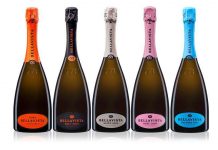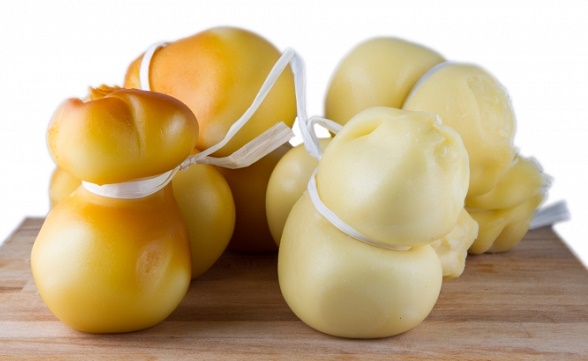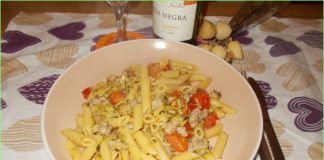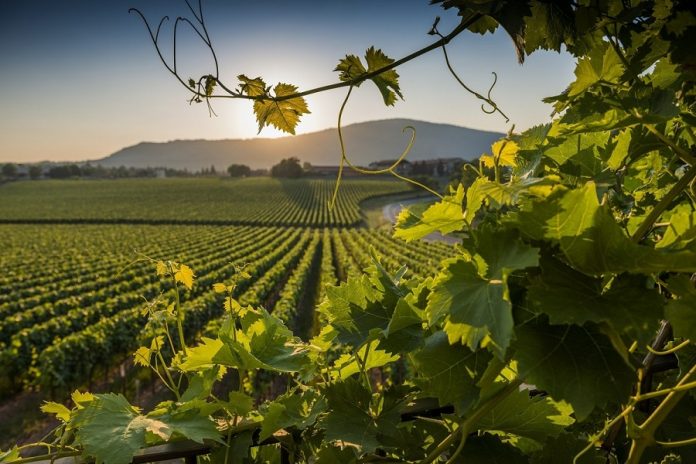
History of Franciacorta
Franciacorta is a vast hilly area in Lombardy, between Brescia and Iseo Lake. In the recent past is become very famous for its production of sparkling wines, very rich and aristocratic, which has attract the attention in the world for their quality similar to the French Champagne.
The area, once densely wooded, has been inhabited since ancient times and slowly the inhabitants have transformed the morphology of the territory up to its current appearance, covered by numerous vineyards. Now some municipalities would like to preserve the natural landscapes, which are enriched by many artistic testimonies like ancient buildings since the Ancient Rome.
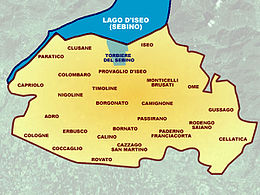
The highest hill is Mount Orfano, in the south, but is less than 500 meters. His geology is morainic.
The curious name of Franciacorta, which means “short France”, is due to the presence of several Benedictine abbeys which were exempted from paying taxes in the past. This areas of exemption were called curtes francae in the Medieval era. In fact the monks “paid tax” in teaching the education to local peasants. Meanwhile the curtes became important commercial centers. So, the modern meaning “short France” has nothing to do with the origin of the name.
This is why we have a large documentation about Franciacorta and its vineyards, starting with those by Pliny, Columella and Virgil, in Roman times. There are also some archaeological finds to witnesses the vine cultivation even in earlier times, before the Romans, when the area was inhabited by Cenomani Gauls. When Romans conquered them, made the cultivation of vines, which was just for local consumption, a real industry.
Then it was the Church, with the fall of Roman Empire, to lead the cultivation, thanks to several abbeys and monasteries. The monastic courts converted a large part of the territory to viticulture, more than Romans. Among the monasteries there was that one of San Salvatore, in the ninth century, but also the monasteries of Clusane, Colombaro and many others.
At the end of the Middle Ages also Franciacorta has lived the struggle between Guelphs and Ghibellines, and also hosted Dante Alighieri. Those political tensions damaged the production of wine until the Renaissance.
Meanwhile the area approved the firsts laws about the local wines, like the Statute of Brescia in 1277, where it is mentioned the name of Franzacurta, evolved then in Franciacorta. At that time the area was at the borders with the Republic of Venice. When French army occupied the Franciacorta, in 1509, the inhabitants give rise to riots in the famous Vespers of Franciacorta, which was then replicated against Napoleon centuries later. The area was then conquered by Austrian before to become part of the Kingdom of Italy.
The new Franciacorta
The Franciacorta wines were nothing to special in the past centuries, and also during the Roman times and the Medieval age were well reputed. Today are back to the past splendor, but are not the same wines of the past. In fact, as we know them today, the sparkling wines were born in the 60s of the twentieth century. Before this date, the wines were still. Then, in the area, the sparkling wine experimentation began, aimed at replicating the results of Champagne in Italy. The operation was perfectly successful, and today the zone is quite totally devote to this production. Franciacorta is synonymous of sparkling wines of great quality, similar to Champagnes, and has his own DOCG for the sparkling production, while still wines are protected under the denomination DOC Curtefranca, once Terre di Franciacorta.
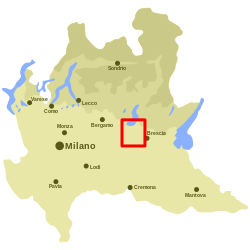
Franciacorta today
Today in Franciacorta there are over 2000 hectares planted with vineyards. Most of those vineyards have been planted in the last five decades, and only recently winemakers have stopped to invest in new vine, due to the economic and some limitations introduced by the consortium of Franciacorta, which is in charge for the protection of the wines.
The Franciacorta in fact, would create a wine near to Champagne for quality, and cannot allow too much producers to not risk to have lowered the quality. This sparkling wine, like the Champagnes, are produced with the classic method, the Champenoise one, with a second fermentation in the bottle.
By the Italian law, that is the first in Italy to be protected in 1995 by legislation with a specific regulation for the Denomination of Controlled and Guaranteed Origin. Moreover it is one of the three denominations in Europe to use exclusively the classic method Champenoise, with Champagne and Spanish Cava. And the area is one of the 10 European denominations which can write on the label the mention of its name with a single term.
Franciacorta can produce Millesimée sparkling wines, Rosé, Satèn and Riserva. The Satèn is the name that in Italy is given to the French Crémant typology. The classic sparkling like Champagne, and the Satén are different for the internal pressure in the bottle. For the Satén must be under 3.5 atmospheres, while for the classic sparkling wine it is between 3.5 and 5 atmospheres.
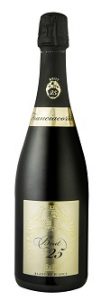
In trying to imitate the Champagne, in Franciacorta it was used the same grapes vinified for the faous Franch sparkling wine, except for the Pinot Meunier, which doesn’t breed well in Itay. Instead, Pinot Bianco is used, but not over the 50 percent.
Franciacorta sparkling wines
Franciacorta sparkling wines are so vinified with Chardonnay, Pinot Noir and Pinot Bianco, with the Champenoise method. Here we have a second fermentation in the bottle, which last at least 18 months before to be filtered to eliminate the yeasts. The wine can be market only after 25 months since the harvest.
The sparkling wines in Franciacorta have a straw-yellow color, with greenish hues in the youth age, and golden ones with aging. The nose is very elegant, aristocratic. It is intense and fragrant, with smell of bread, yeast and citrus scents. Then we find dried tree fruits, such as almonds and figs as tertiary aromas.
In the mouth is perfectly balanced, sapid and soft. The wines have different grades of sugars, like Not dosed, Extra brut, Brut, Extra dry, Sec or Dry, Demi-sec.
For the Franciacorta Satèn, winemakers use Chardonnay and Pinot Bianco, to have a ripe wine, fruity, with flowers and almond, and hazelnut toasts smells. In the mouth is pleasant, silky, sapid and fresh.
For the Franciacorta Rosé, the Pinot Noir is vinified separately, and it is often the only grape of the wine. This vinification is very delicate and difficult, and needs absolute accuracy. The nose has smells of ripe red berries and in the mouth is fresh and plenty.
For the aging, the Franciacorta Millesimato has 37 months of maturation, and the vintage can be blended at least for the 85%.
In the Millesimato we have the best wine selection, because, like for the Champagne, the declaration of a Millesimato means to have the best of the production, and fall the wine can put at risks the reputation of the wine in an unfavorable season. For the Franciacorta Riserva the ageing is at least 60 months on the lees and 67 months, from the harvest.
The cultivation in Franciacorta
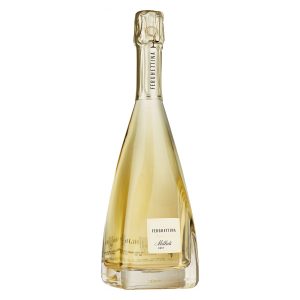
The cultivation of vines in the area has radically changed for the production of sparkling wines. For the Chardonnay and the other grapes use now, winemakers have to use new forms of breeding and relatively young vineyards. The first plants were cultivated starting from the 60s, and then from the 70/80 and then 90s.
In the 60s the breeding system used was the pergola, but now it is more suitable the high espalier, for the mechanization, as well as the low espalier breeding with Guyot pruning and spurred cordon.
The harvest takes place from the middle of August for the Chardonnay, to have the best acidity and sugars. The harvest last twenty days, in which the first week is for the Chardonnay. Then is the time for the Pinot Nero (second week) and as last for the Pinot Blanc. The harvest is exclusively manual. Only later we have the harvests of grapes for the other denominations, until the middle of October. We have Merlot, Nebbiolo, the two Cabernet and the Barbera.

